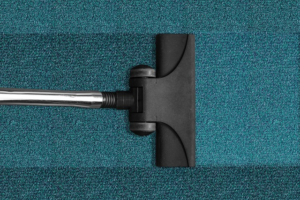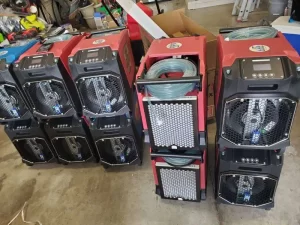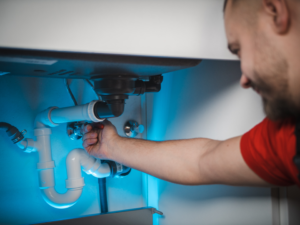Nashville homeownership can come with many twists and turns, primarily in the form of unexpected repairs. One of the most troublesome is a burst pipe.
In this article, learn how to fix a pipe burst to minimize damage to your home and your wallet.
When Do You Need Professional Water Restoration?
After your home sustains any type of water damage, there’s a risk of mold, mildew, and all sorts of structural damage. Look out for the following signs to decide whether or not you need to hire a professional water restoration company for further repairs:
-
- If the water leak is a few gallons of water or more
-
- Swollen or warped wood
-
- Buckling floors
-
- Chips, cracks, sagging in the paint or dry wall
-
- A musty smell
If you notice any signs of the above, contact a professional water restoration company as soon as possible to minimize damage.
What To Do Immediately After Discovering A Burst Pipe
As soon as you find signs of a burst pipe in your home, do the following to minimize water damage in your home:
-
- Shut off your water – switch off the valve on your water meter to stop the water flow.
-
- Drain the pipe – use a pipe cutter to drain the water from the damaged section. As you drain, place a bucket under the to catch any water.
-
- Call a professional – the average homeowner cannot repair a burst pipe alone. To avoid another similar incident in the near future, rely on a professional plumber to do all the necessary repairs.
-
- Clean up the water as much as possible – if the water is more than a few inches deep, it could be too dangerous for you to handle on your own. You should wait and let a restoration specialist handle this cleanup for you. They will be able to assess the full extent of the damage and help you understand what you can expect from your insurance company.
DIY: How to Give Your Pipe A Temporary Fix
If a restoration specialist can’t immediately fix your plumbing system, and you need to be able to use running water, then you might need to find a way to temporarily fix your pipe. Thankfully, there are quite a few ways of doing this.
Duct Tape
You might think this solution is super trashy, but using duct tape or another type of waterproof tape, like fiberglass tape, can be incredibly effective as a short-term solution until you can repair the pipe.
The duct tape acts as a bandage for your pipe, covering every little hole so that no water can get through as you continue to use it.
How to Do It
To use duct tape for a burst pipe repair, you need to wrap the tape tightly around the leaks in the pipe, making sure that the edges of the tape overlap so that no water can escape through the cracks.
Epoxy Putty
Like waterproof tape, epoxy putty acts as a barrier to patch up small leaks on a pipe. This is another temporary fix to prevent further damage until you can find a more permanent solution.
For this method, you will need:
-
- Epoxy putty
-
- Sandpaper
How to Do It
To use epoxy putty for a pipe repair, you’ll first need to use sandpaper to smooth to rough edges of the broken areas of the pipe.
Then, mold the putty over the area where the pipe has a small leak. It should take an hour or so for the epoxy to harden and repair the leak, and then you can use your water again.
C-Clamp
Another temporary fix you can use to repair a pipe is a C-clamp. Using a C-clamp is a great option because it’s both easy and can last a couple of months if done correctly. For this method, you will need:
-
- A C-clamp
-
- A waterproof layer (like a piece of rubber or a waterproof membrane)
-
- A block of wood
How to Do It
To use a C-clamp to fix a pipe, you will first need to take whatever waterproof layer you have available and mold it over the leaks in the pipe.
Then, take the block of wood and your C-clamp. Tighten the clamp over the block of wood until it is firmly in place and will be able to stop water from getting through the waterproof layer.
Pipe Repair Clamp
A pipe repair clamp is a much more permanent option for fixing pipe since it will last essentially until you need to replace your home’s plumbing system altogether.
There’s more than one type of pipe repair clamp on the market, so it’s important to research to find the one that will work best for you.
Some are metal sleeves with rubber pads that simply screw into place to fit over leaks, while others need to be soldered into place. For this method, you will need:
-
- A pipe repair clamp
And depending on the type you use, you may also need
-
- Lead-free solder wire
-
- A blow torch
-
- Protective gear
How to Do It
If you’ve opted for the cheaper, easier-to-install version of the pipe repair clamp, then you have to fit it over the leak in your pipe and tighten the screws until the rubber pads are fully flush with the pipes.
However, if you prefer the added assurance of soldering, then you’ll need to use your blowtorch to melt the solder wire onto the clamp to join it to the pipe.
Pipe Replacement
If more extensive damage has been done than just a few pinholes, you will need to replace the entire section of the burst pipe to ensure that the leaks do not return. For this method, you will need:
-
- Pipe cutters, or a power tool (depending on the diameter and type of pipe that you’re trying to cut)
-
- Protective gear
-
- Measuring tools
-
- A replacement pipe
-
- Sandpaper
-
- Flux
-
- Solder wire
-
- A blowtorch
-
- A joint to join the pipes
How to Do It
The first thing you need to do when replacing a burst pipe is cut out the damaged section.
Once the damaged section has been cut away, it’s time to measure and cut the replacement section.
Before the replacement section can be fitted into the rest of your plumbing, the ends of the piece need to be sanded, and flux should be applied to prepare it for soldering. Flux is a paste or liquid that removes oxides and helps enhance the solder flow.
Finally, it’s time to install the replacement piece. You will do this by soldering it into the existing plumbing. Slide the ends of the pipes into the joints and solder around the edges.
Keep in mind that the soldering process will work best if you start from the bottom and work your way up. The soldering materials should naturally flow into the gap between the pipe and the joint. If they do not, then the joint is not hot enough.
To ensure that the repair was successful, you’ll need to turn the water back on. If any leaks persist, you will need to drain the pipes and try again.
What Causes a Burst Pipe?
The best thing you can do to avoid enduring another similar incident is to understand what causes it.
-
- Age – Over time, the pipes in your home face a lot of erosion. This erosion can lead to leaks by creating small pinholes, an especially common problem in copper pipes.
-
- Excessive pressure – If there is an excessive amount of water pressure in your pipes, it can lead to leaks. This is an issue that stems from your supplier. This issue could be prevented by utilizing special valves to reduce this force.
-
- Freezing temperatures – This is the most commonly known cause of leaky pipes but can be difficult to identify since your water will still work; it will just be much slower. To prevent a pipe from bursting, you must monitor it and keep it well-insulated, especially if it is in an unheated attic or crawlspace, or if it runs parallel to a poorly-insulated exterior wall. These have the greatest risk of freezing and bursting, costing you a lot of money in repairs.
-
- Tree roots – Tree roots can be highly detrimental to your water lines, especially those that run through the ground outdoors. Tree roots will wrap around an underground pipe, applying more and more force as it grows. Eventually, this force becomes too strong, and it can lead to the pipes bursting. Because of this, it’s important to familiarize yourself with the layout of where your waterlines are buried in your yard.
This information will help you make more informed landscaping decisions. You’ll be able to plant trees and shrubs in spots that won’t force you to make more repairs.
For Stress-Free Water Cleanup, Call Flood Kings
While burst pipes are incredibly stressful, you have all the tools to shut off your water, drain the pipe, and clean up water to minimize repairs while waiting for a professional to arrive.
After any water emergency, call our 24/7 emergency line for immediate, no-stress professional assistance.








